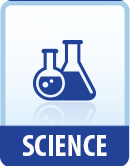|
This section contains 377 words (approx. 2 pages at 300 words per page) |
Oxytocin is a small protein that is manufactured in the brain of humans and other mammals. It is secreted in the brain, ovary and testes, were it functions in a number of activities that are vital to the birth process and for milk production to nourish the newborn.
In females, as befits its origin from the Greek for "swift birth," oxytocin stimulates the smooth muscles of the uterus to contract. This occurs during labor as part of the birth process. Indeed, when uterine contractions are proving insufficient to propel the baby down the birth canal, physicians will sometimes administer oxytocin (also known as pitocin) to complete delivery. Oxytocin also causes contraction of muscle in the mammary glands, which ejects milk from the breast to the suckling infant. Studies in mammals have established that approximately 80% of breast milk is available only after ejection. Thus, proper nutrition is dependent on the presence of oxytocin.
Oxytocin has other functions as well. In mammals other than humans, oxytocin also plays an important role in maternal behavior, such as nest building and care for infants. In humans its release in the brain has a calming effect. More recent research has indicated that oxytocin may also be associated with the ability of humans to "bond" with others in psychologically healthy and meaningful relationships. So, in addition to stimulating birth and nutrition of the newborn, oxytocin may also facilitate the emotional bond between mother and child.
Oxytocin also has a role to play in male physiology. It is detected during ejaculation. Hence, it has been surmised that oxytocin in men facilitates sperm transport and perhaps aspects of sexual behavior that lead to mating.
Other hormones are oxytocin-like in their structure or action. Prolactin is an ancient hormone that originally functioned to maintain the salt and water balance in vertebrates. With evolutionary changes, prolactin assumes a variety of functions. In conjunction with estrogen, prolactin controls the production of milk (whose subsequent ejection from the breast is controlled by oxytocin). Vasopressin, which has an almost identical amino acid composition as oxytocin, is an antidiuretic hormone. Nonetheless, its function is quite different. Vasopressin controls the reabsorption of water by the kidneys and regulates the osmotic content of the blood.
|
This section contains 377 words (approx. 2 pages at 300 words per page) |


